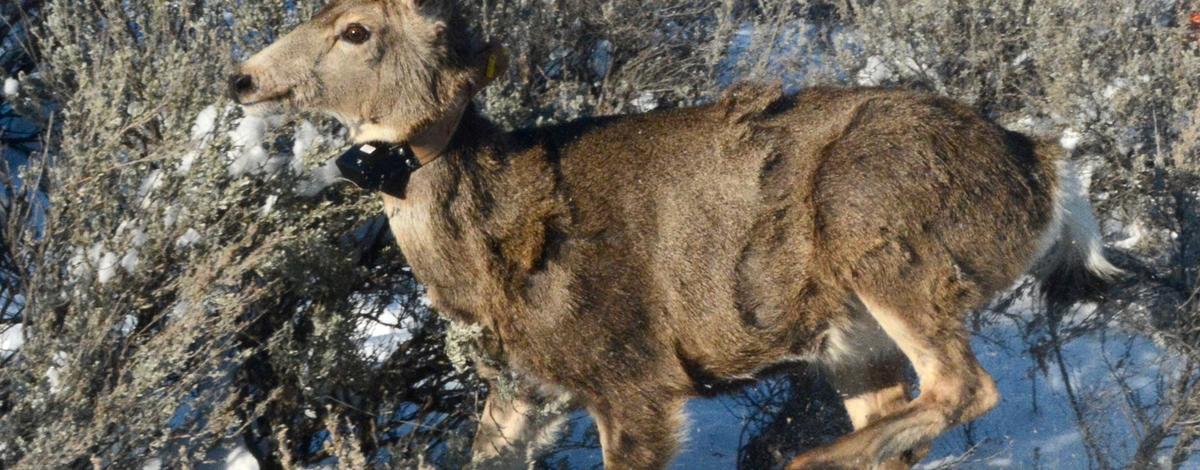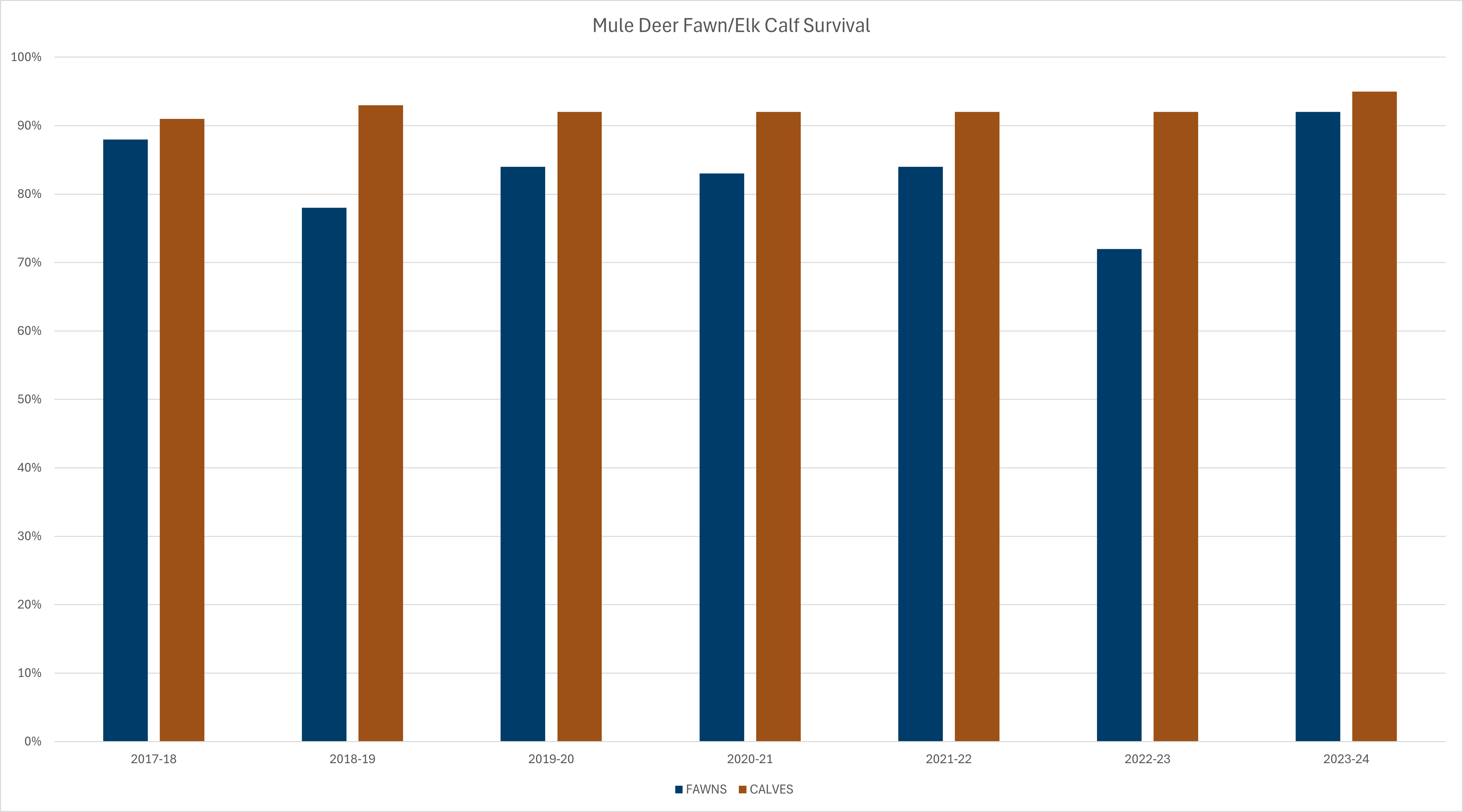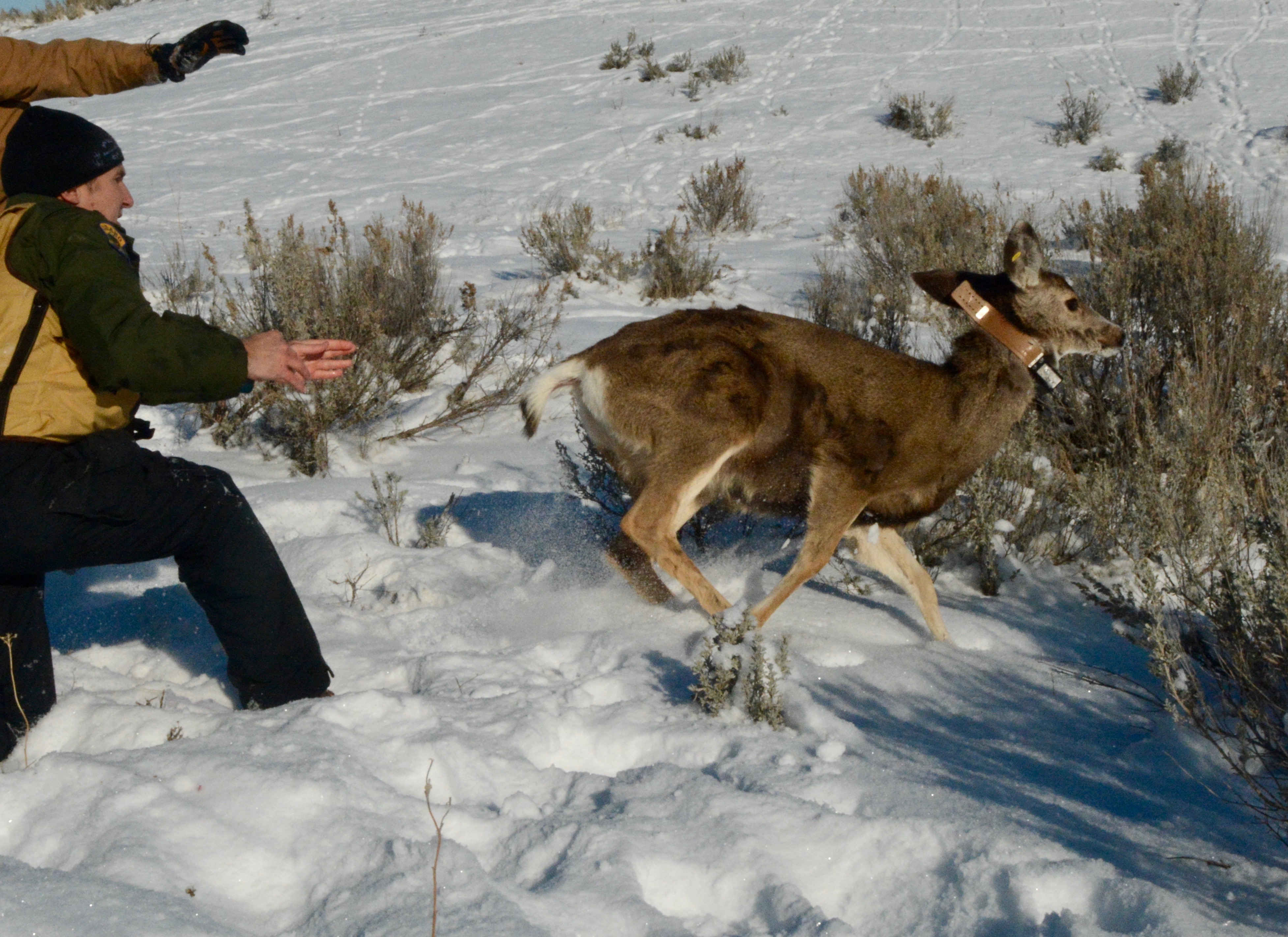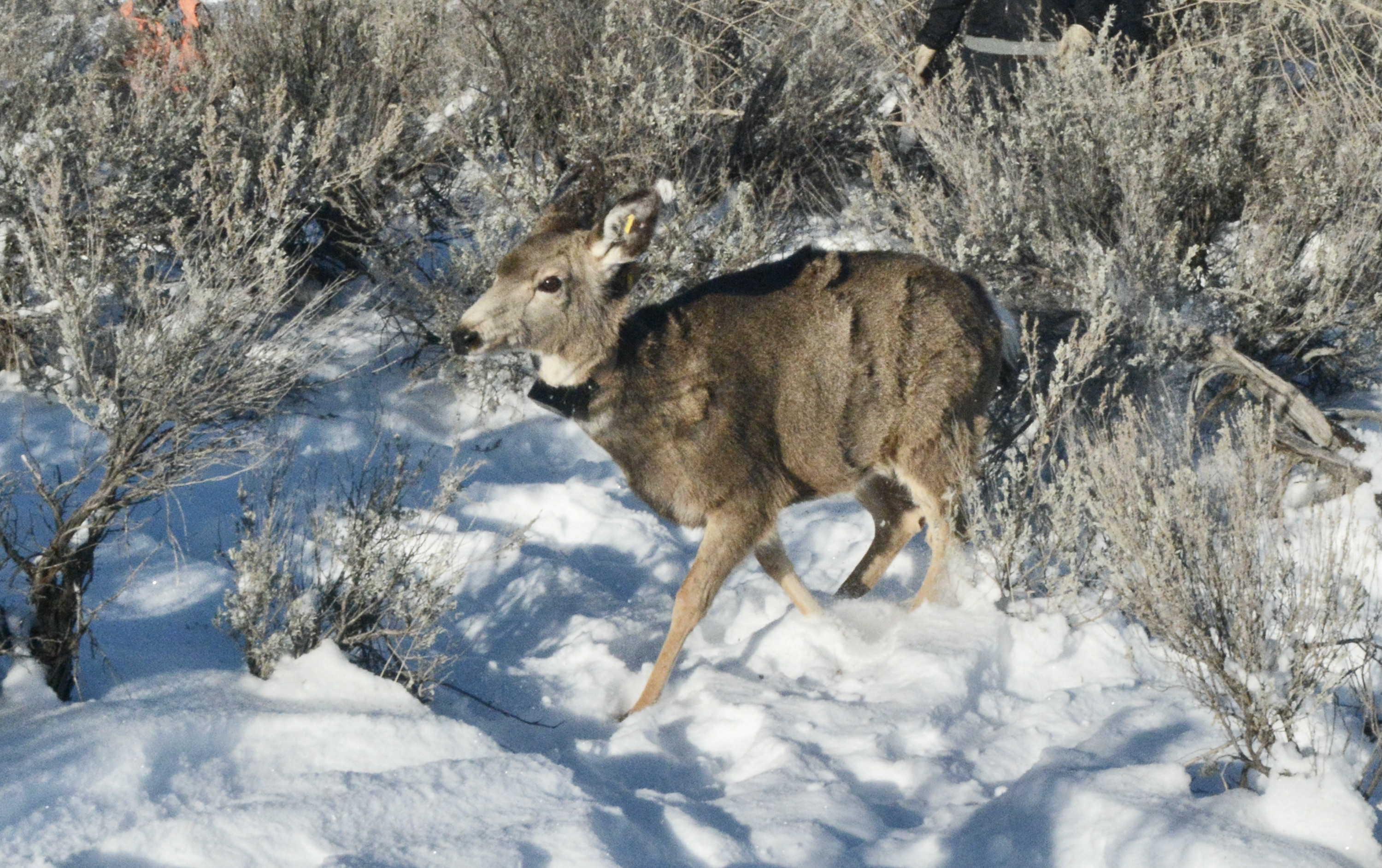Statewide winter survival for mule deer fawns and elk calves fitted with tracking collars has shown to be slightly higher than average through the end of March.
"From a statewide perspective, winter survival is tracking very close to what we’ve seen prior to last year’s brutal winter," said Fish and Game’s Deer and Elk Coordinator, Toby Boudreau. “That should help eastern Idaho’s mule deer herds, but it’s going to take more than one mild winter for them to recover.”
A glimpse into winter survival
Winter survival is typically the biggest single factor affecting mule deer herds, and the long-term average is about 60 percent of fawns surviving their first winter, but during hard winters that can be significantly lower. To monitor herds, Fish and Game biologists in early winter captured and collared 217 mule deer fawns and 151 elk calves in various parts of the state to track their survival over winter.




